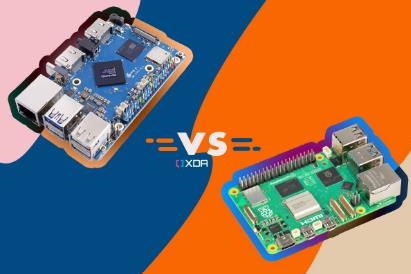Right now, the Raspberry Pi 5 and Orange Pi 5 are two of the most exciting single-board computers you can buy. There are things that make each one unique. When picking the best one to help you make your next invention, speed isn’t the only thing to think about. You also need to think about how well the platform fits with the specific needs of your project, whether they are AI edge devices, immersive media centers, or rugged industrial applications.
The Orange Pi 5 Pro sports an octa-core RK3588S SoC and LPDDR5 RAM. This means that it can handle 30 to 50 percent more work on many cores than the Raspberry Pi 5 when it comes to hard jobs like writing big codebases or processing big AI/ML workloads. It can do floating-point operations per second (FLOPS) nearly twice as fast as the Raspberry Pi, which makes it great for graphics rendering and scientific simulations that need a lot of power.
But speed isn’t the only thing that counts. The Raspberry Pi 5 is amazing because it has a huge community of developers and fans who trust it. With so much help from the community, the software will be very stable, problems will be solved quickly, and there will be a vast range of pre-made apps. This makes it a perfect choice for multimedia applications, instructional projects, and fast prototyping. It has official Raspberry Pi OS and support for many Linux distributions, which makes it easy to connect to a lot of different devices.
The way they link to other devices is also different. The Raspberry Pi 5 is both stable and adaptable. It contains a 40-pin GPIO header, two USB 3.0 ports, two tiny HDMI outputs, and PCIe Gen 2.0 lanes. These capabilities are useful for people who are just starting out or who use the device for a lot of different things. The Orange Pi 5 is a little bigger and heavier, but it has more possibilities for adding things, such optional M.2 slots. These are useful for scenarios where a lot of data needs to be moved quickly or for industrial-grade storage needs.
The Raspberry Pi 5 uses roughly 4W of power and has superior thermal management, which means it makes less heat when it is running. The Orange Pi 5 utilizes roughly 5W of power, therefore it often needs active cooling while it is doing intense work. This makes things harder, but it’s an excellent alternative for deployments where speed is important.
In short, the choice is
– **Pick Raspberry Pi 5 if** you want a strong, helpful community, mature software optimizations, and an easy-to-use and reliable environment for a lot of different projects.
– If your innovative idea demands powerful multi-core processing, a lot of media alternatives like 8K decoding, or flexible industrial storage solutions, and you’re alright with working in a less well-known but quickly growing software industry, choose Orange Pi 5.
The Raspberry Pi 5 is like a solid multitool that works well right away. The Orange Pi 5, on the other hand, is like a high-octane engine that needs to be tuned just so but will give you great performance. Both are likely to lead to new ideas, but the optimal board for your project will depend on what you want to achieve.
—
**A Look at the Most Important Specs:
| Feature | Raspberry Pi 5 | Orange Pi 5 Pro |When choosing between these two, you have to weigh the raw processing power against the peace of mind that comes with a well-tuned environment that will help your single-board computer move your innovation forward quickly.
You have to choose between these two based on how much processing power they have and how much peace of mind you get from a well-tuned environment that will enable your single-board computer move your innovation forward quickly.





